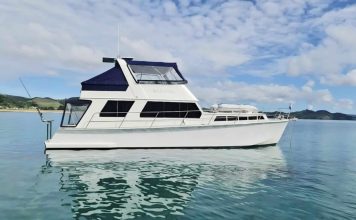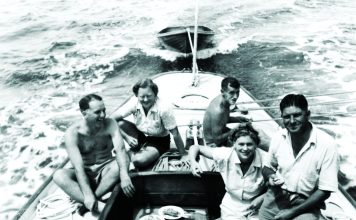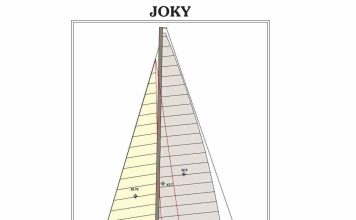The basis of amphibious technology is well proven. The concept originated in New Zealand almost 20 years ago, and the early founders were the only players in the market for quite some time.
But in recent years we’ve seen a number of other manufacturers produce retractable wheel variations. Orion Marine, for example, now manufactures a locally-developed technology that’s being licenced to some of the most popular boat brands. In addition, there are other niche manufacturers building their own custom solutions.
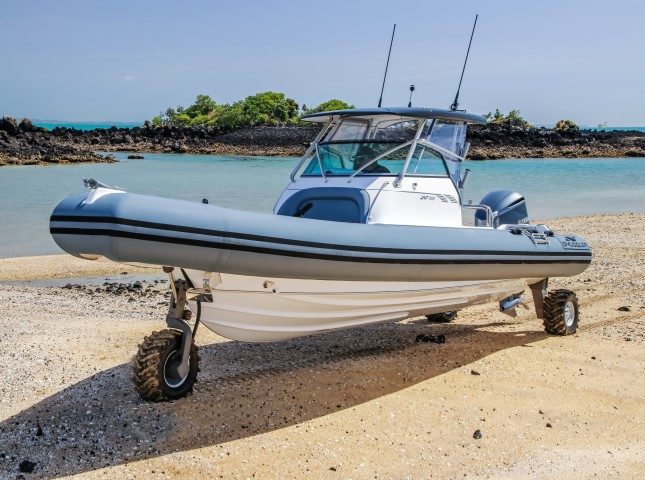
The move to amphibians hasn’t escaped the notice of the big players overseas, and there are several American and European companies now building similar vessels.
Smuggler Marine is one of the premium New Zealand boat manufacturers who recognised the market opportunity for a boat that does not require a trailer and four-wheel-drive tow vehicle. Its Strata 800 is the first Smuggler model to feature the Orion solution.
Amphibious wheels, with brakes, and an independent engine are hidden away in the hull and are deployed when required. Based on the well-proved Strata 750 RIB, the Strata 800 Amphibious is just slightly longer overall to accommodate the wheels.
This Strata comes in two basic configurations – a centre console and a mid-cabin. We’ve previously reviewed these boats and found them to be fantastic performers. Their seaworthiness is superb, with the wide pontoons acting like giant shock absorbers. Their planing strakes provide lift to make speedy and fuel-efficient hulls. Smuggler boats are renowned for their workmanship and the standard of finish is excellent.
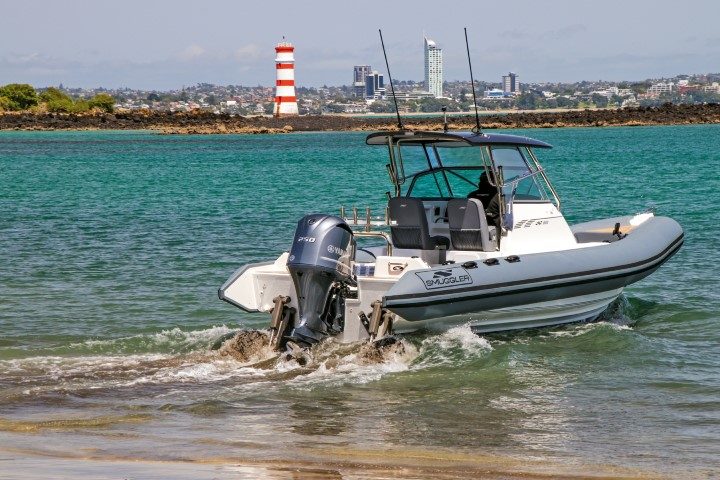
Which brings me to the question: has the amphibious technology changed any of this? Have the extra weight and additional appendages affected the handling or seaworthiness, and is the ride as good as before?
We got to have a play with the Smuggler Strata 800 Mid-cabin Amphibious on a stunning late-spring day, and the experience was an eye-opener.
Boat reviews rarely refer to the ride and handling as ‘the boring stuff’, but that’s the case with this boat. Which is to say it’s as solid and dependable as ever. In fact, you can’t tell any difference in the ride from the standard 750 RIB, despite all that the amphibious technology hidden in the hull.
And, from an occupant’s point of view, it really is hidden. The nose wheel tucks tight up into the modified bow tube and is totally invisible from inside the boat. Even an observer standing on shore would struggle to notice the gentle curve of the wheel sticking just below the front pontoon.
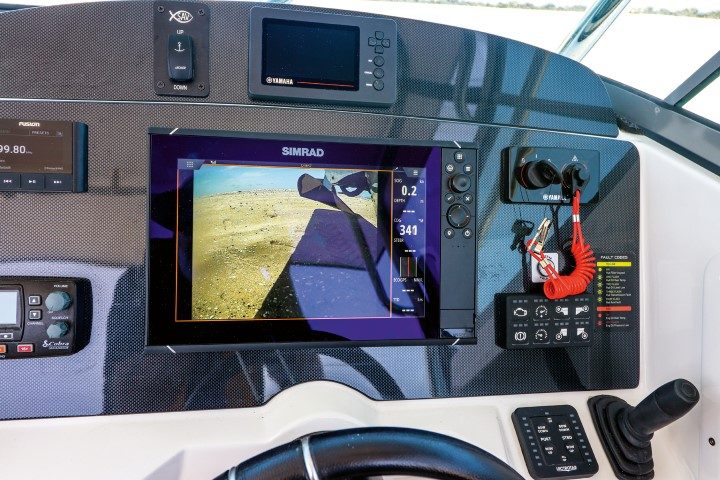
On the other hand, Smuggler owner Dave Pringle says the wheel arch acts as a further bow chine, deflecting all bow spray away from the boat. Certainly, no spray made its way onto the vessel, even when pushed hard. She’s perfectly dry.
The rear wheels tuck up inside the pontoons at the back, and although they’re somewhat more visible they are completely out the way. They do not impinge on the boarding platforms either side of the 250hp Yamaha four-stroke outboard. In fact, if anything they give an additional place to sit or rest against while fishing.
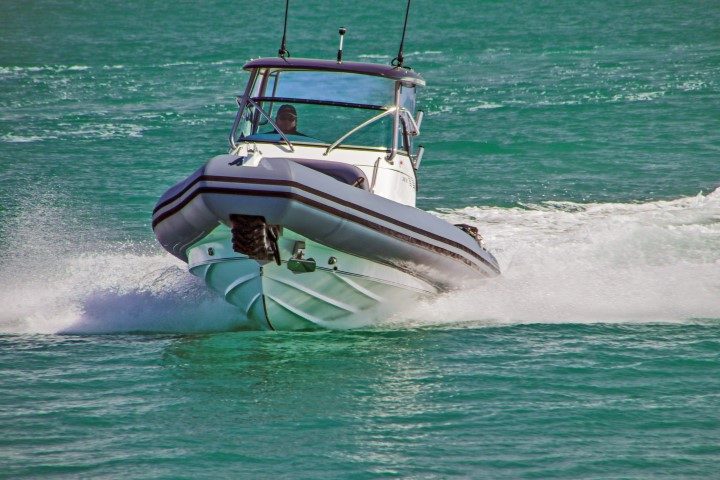
And speaking of the Yammie, this boat easily exceeds 30 knots – so the extra weight has made little difference to top speed. And because the auxiliary engine and wheels are very low in the hull, they have a negligible effect on the handling and seaworthiness.
This mid-cabin model amphibious seems largely unchanged from the standard model, with a hardtop and clears to keep occupants dry. Two chilly bins with padded squabs provide additional rear-facing seats for two. And the bow area has further seating with both a forward-facing and a rear facing bench.
Of course, on a RIB there is a comfortable seat everywhere on the pontoon, so this boat can accommodate more than just the eight catered for in dedicated seats.
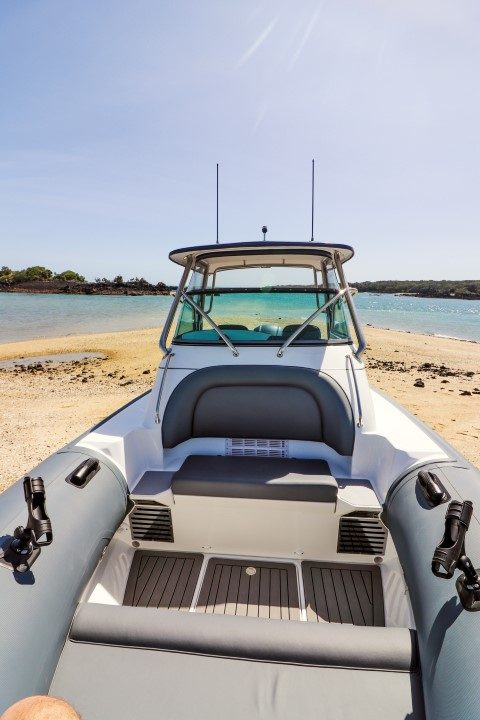 Wanting to check out the cool stuff, we headed over to the Rangitoto lighthouse, or more specifically Mackenzie Bay. The low tide revealed a nice sandy beach and, as it turned out some picnickers had just arrived. We watched them pull their small inflatable up to the beach, hop out (getting their feet wet) and then struggle to drag their boat from the water.
Wanting to check out the cool stuff, we headed over to the Rangitoto lighthouse, or more specifically Mackenzie Bay. The low tide revealed a nice sandy beach and, as it turned out some picnickers had just arrived. We watched them pull their small inflatable up to the beach, hop out (getting their feet wet) and then struggle to drag their boat from the water.
For us it was much easier. Pringle started the auxiliary engine, which answered my first question: where is it? Turns out there is plenty of space inside the hull under the seat and cabin forward of the helm. Here it is sound-proofed and completely out the way, and Pringle says there is sufficient airflow (with a supplementary fan) for the air-cooled petrol engine to run without overheating issues.
He lowered the wheels and we moved towards the beach. As soon as he felt the front wheel make contact he started the hydraulic drive. Once the wheels gained traction he killed the outboard and we drove up the beach.
There was no need to tilt up the outboard, since the hull rides high enough for it to clear most obstacles. A neat touch is the waterproof camera fitted under the bow and connected to the Simrad NS12 touchscreen multifunction display. This shows the skipper exactly what lies ahead.
That same camera is also used when pulling up the anchor, to confirm it is stowed correctly in its tucked-away bowsprit. Spotlights under the bow even enable night-time driving.
Pringle demonstrated another trick to assist in getting heavy items or people with reduced mobility off the boat. After first tilting up the outboard, he lowered the wheels part way down so the hull rested gently on the sand. Now it was a simple matter of stepping over the side straight onto terra firma with dry feet.
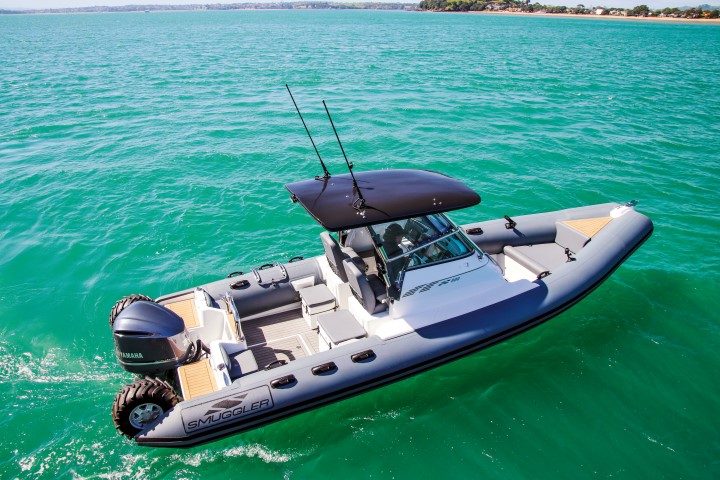
Suffice to say the picnickers were envious, and some small chit-chat (dare one say ‘ribbing’?) was exchanged about relative effort involved between the two boats.
We reversed the process for climbing aboard. Though the beach was pretty steep the boat proved stable, even when turned side-on. The three-wheel drive mechanism provides forward and reverse, and the wheels are also braked for maximum control. The wide, all-terrain tyres had no difficulty with the soft sand and would do equally well over shingle, rock or indeed any road surface.
Although the auxiliary doesn’t make much noise, its sound is very different to the muted hum of the water-cooled Yamaha. Pringle says there is no specified duty-cycle for the amphibious drive and it should have no issues with being run for extended periods. Neither the engine nor the hydraulic systems have presented any overheating problems.
And there you have it. This is a boater’s dream – and the solution to the marital stress of launching and retrieving. Anyone challenged by backing a trailer into the water at the boat ramp, or getting the boat back onto the trailer in a cross-wind or a chop, will love one of these.
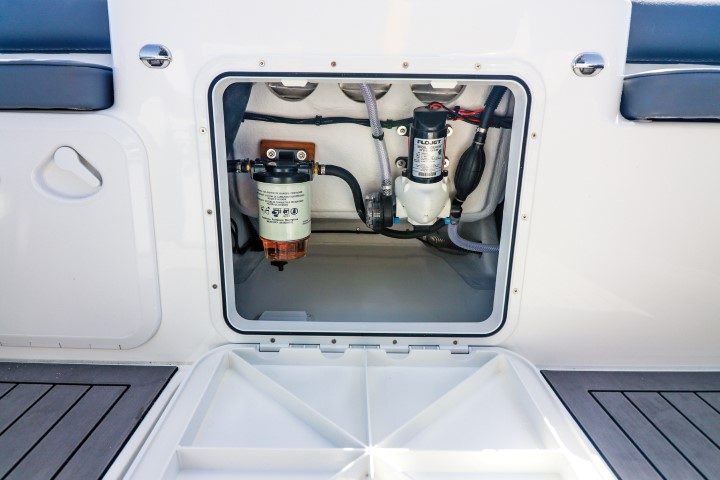
Of course, it is also trailerable and, even better, the boat can be driven onto the trailer out of the water. So you don’t even have to fight the traffic and find parking at the boat ramp. You can park some distance away, get everything and everyone loaded on the boat, and simply drive down the road to the ramp and into the water.
Taking in the envious glances from the poor suckers waiting their turn at the ramp!










